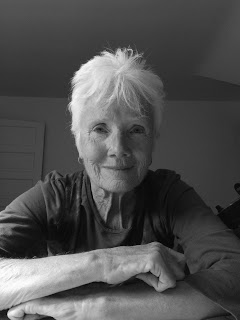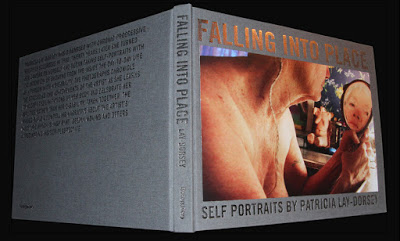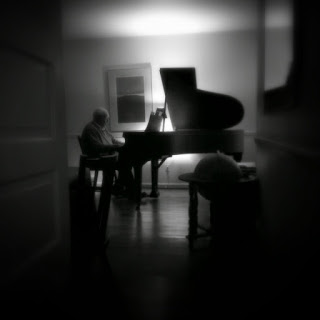Patricia Lay-Dorsey Interview!
 |
| CM15 Residency Award Winner Patricia Lay-Dorsey |
Photolucida: Tell us a little bit about your photography background and how you came to choose photography as your life’s work. You had a whole other career first, right?
Patricia Lay-Dorsey: For me, it started in 1966 with a masters in social work, which led to my volunteering on the pediatric ward of an inner-city Detroit hospital. When I started bringing home drawings I’d done with the kids, my husband saw something in them that inspired him to buy me art supplies. I was soon winning statewide awards for my abstract watercolor paintings but I could barely draw a stick figure. So I went back to school at a local art college, and jumped into the Detroit art scene as an exhibiting painter, sculptor, multimedia and performance artist. I also wrote art reviews, taught classes, and facilitated workshops. Art became my way of dealing with both personal and global issues.
During the first US war against Iraq in 1991, pen-and ink drawings burst forth from me with a raw power that resonated with anti-war activists across the globe. My postcards and drawings under the logo Word Art were sold and published. In 2002, I co-founded Detroit’s chapter of the Raging Grannies. We older women from across the country responded to the war against Iraq by demonstrating in protests and vigils nationally. Our granny costumes and the way we sang our opposition to war using cleverly-written original lyrics set to familiar tunes made quite an impression!
In 2000, I started keeping a blog on which I posted daily entries accompanied by point-and-shoot photos. By 2006, I was tired of words and only wanted to take pictures. So I bought a Canon, took a few fundamental photography classes, and have been passionate about photography ever since. During the past nine years I have found that every chapter of my life – social work, visual art and peace activism – has influenced how I use photography. Each of my projects is undertaken with the intention of cracking open the viewer’s mind and heart to the truth that our different ways of being in the world enrich rather than divide us.
 |
| Falling into Place |
Tell us about how you are using your book ‘Falling into Place’ as a springboard for discussions about disability, self-image and creativity?
First let me explain a bit about my book project, Falling Into Place. In 1988, I was diagnosed with chronic progressive multiple sclerosis – I was 46 years old. By 1996, I was using a walker to get around. Four years later, I graduated to an Amigo mobility scooter, which has been my primary mode of transportation for the past 15 years. In 2008, I started taking self-portraits with the intention of showing the day-to-day life of a person with a disability as seen from the inside. In 2013, Falling Into Place was published by Ffotogallery. It has been distributed globally and joins solo exhibitions, online features, print publications and videos in giving voice to my perspective that living with a disability is neither heroic nor pitiful, but simply another way of being in the world.
Since the book was launched, I have had numerous opportunities to give gallery talks, slide presentations, and to facilitate interactive discussions where disabled and non-disabled people can meet and share their stories. Disabled folks say they are finally hearing and seeing their story told as it really is, and non-disabled participants invariably say it has opened their eyes to a more intimate view of what it is like to live with a disability. My favorite presentations are to university students – the openness with which these students share their own stories and listen to mine takes my breath away. In my opinion, there is no better use of photography than this.
 |
| Tea for Two |
Time.com included you in their ‘Instagram Photographers To Follow In All 50 States’ group. Tell us a bit about your Instagram community – you have quite a large following (about 14k)!
Before I opened my @patricialaydorsey Instagram account in 2013, I had gotten into the habit of primarily taking photos for projects. Since I was usually working on at least one project, I was photographing regularly but not experimenting or trying new things. Taking iPhone pictures and posting them on Instagram rekindled my love of playing with photography. It was that sense of play that led me in January 2015 to start taking blurry b&w iPhone pics of my day-to-day life with Eddie, my dear husband of 49 years. My previous work was generally in color using sharp focus so this new way of seeing and taking photos was quite a change.
It was this project – now called Tea For Two – that qualified me to receive the Critical Mass 2015 Rauschenberg Residency Award. It was also this work that Olivier Laurent of TIME Lightbox saw at the NY Times Lens Portfolio Review in April 2015 and four months later featured in the article to which you referred in your question. It was my Instagram followers who first saw what they called my “Eddie pictures” and strongly urged me to take these soft focus b&w iPhone pics seriously and pursue them as a longterm project. I will be forever indebted to my Instagram community because I doubt if Tea For Two would have existed were it not for their support and encouragement.
What are some of the challenges you’ve encountered on your creative path? Any relevant advice you can share with others?
There are certainly physical obstacles I encounter because of my disability, but I have not let that stop me. If I can’t do one thing, I find another. Regarding advice, all I can say is what I always tell myself: Lighten up, push the envelope and dare to do something different. It is so easy to get into habits, especially if they have brought you success. But I now know from having broken my own addiction to sharp focus and color, it pays to use a tool like Instagram to take the pressure off and just play. The key is to get out there and take photographs every day. It doesn’t matter what camera or smart phone you use, just do it!
Have you thought this far ahead on what you would like to be working on creatively during your Residency? What are your expectations?
I can’t recall ever being this excited about anything in my 40 years as an artist. Right now I am attracted to the idea of telling the story of the Rauschenberg Residency program from the inside – taking photographs of myself, my colleagues, the place, the creatures, ALL of it…not through the eyes of a documentary photographer but those of a fine artist. I want to express not so much how it looks as how it feels.
As I work, I want to keep in mind Rauschenberg’s artistic legacy of breaking boundaries, taking risks, collaborating with multidisciplinary artists (like John Cage and Merce Cunningham), and using art to create change and build bridges. I will do my best to live in the moment and remain open to whatever new ways of thinking, seeing and creating emerge during those four weeks of living in community with a small group of women and men who are as passionate about their forms of art as I am about mine, artists with whom I hope to collaborate. I expect the residency to be life-changing and when the time comes to leave I know I will be filled with profound gratitude to Photolucida, the Robert Rauschenberg Foundation and all those with whom I shared that remarkable time and place.
What’s another interest of yours, outside of photography (something we might be surprised to learn about you)?
If the readers of this blog entry simply Google “Grandma Techno” they will find evidence of an interest of mine that might surprise them!






This is a very interesting project. Great work.
Wonderful!!!! Thank you! I am eager to see what happens during your residency. . .